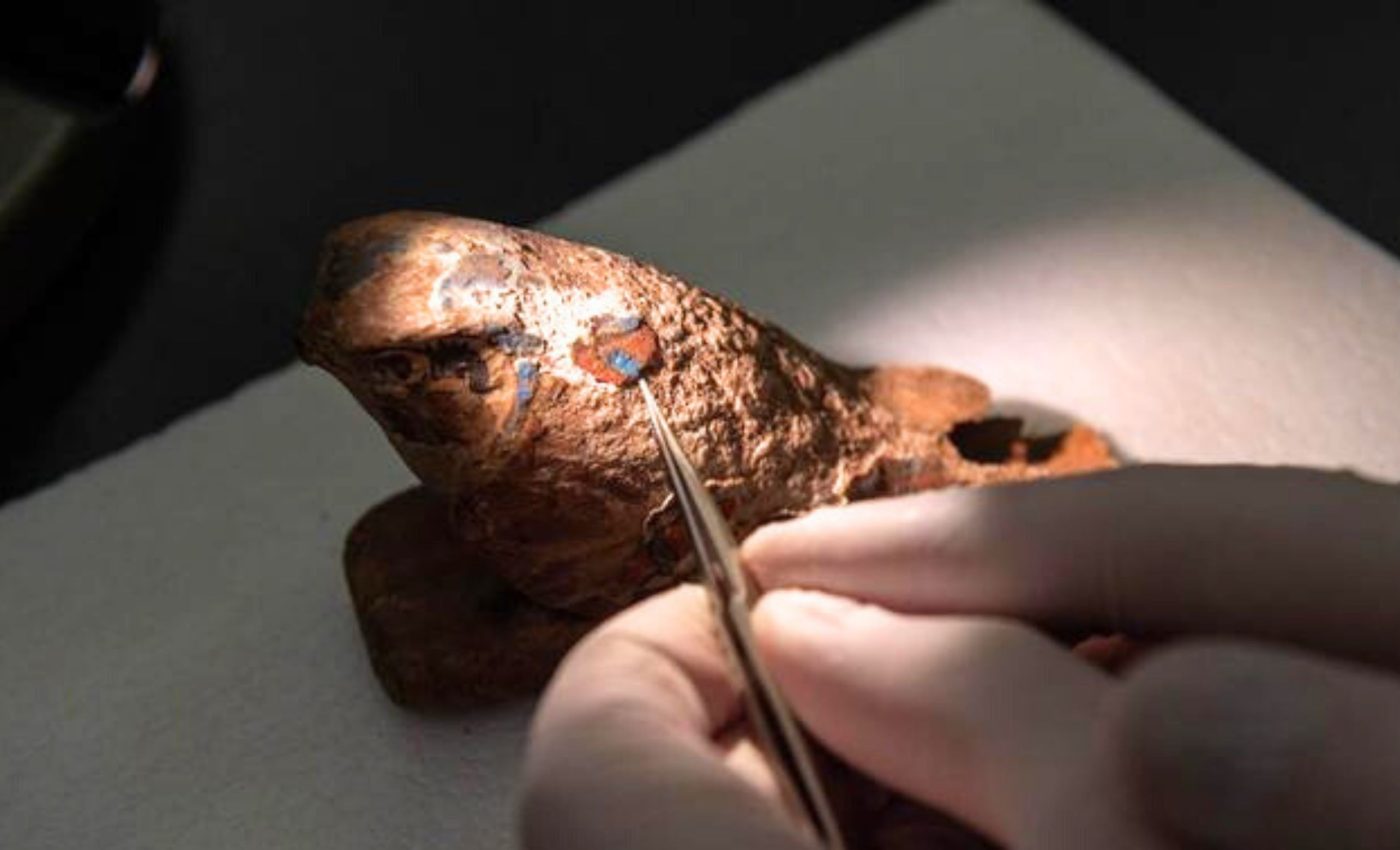
Egyptian blue pigment recreated after 100 years
For centuries, the world forgot how to make Egyptian blue – the first synthetic pigment in human history. First used around 3100 BCE, this rich blue adorned statues, walls, and tombs across ancient Egypt and beyond.
Despite its widespread use in antiquity, the process to create the pigment was lost for over a thousand years. What was once common in temples and mosaics became a chemical mystery.
Now, thanks to new scientific work led by Washington State University (WSU), that mystery is being unraveled. The team has recreated Egyptian blue using modern tools while staying faithful to ancient methods. Their work doesn’t just recreate a color – it rebuilds part of our shared human past.
“We hope this will be a good case study in what science can bring to the study of our human past,” said John McCloy, lead author and director of WSU’s School of Mechanical and Materials Engineering.
How the blue pigment was made
Cuprorivaite, a copper-based mineral, gives Egyptian blue its color. But ancient pigments also contained silica, glass, wollastonite, and even unreacted minerals. The resulting mixture varied based on ingredients, heating time, and cooling speed.
The researchers found that pigment color changed drastically with minor tweaks. They observed that malachite yielded bright blue even after one hour of heating.
Azurite needed longer heating to match the same hue. Adding soda (Na₂CO₃) encouraged the formation of a glass phase, often giving the pigment a greenish tint.
Microscopic analysis revealed most particles are not pure. Instead, they contain intergrown crystals and glassy blebs. Even seemingly blue grains hide complex inner structures.
Cooling speed changed the final color
The team discovered that slower cooling improved color. When cooled gradually, more cuprorivaite crystals formed, making the pigment deeper blue. In fast cooling, glass and silica dominated, leading to duller colors.
Tests showed a 70% increase in cuprorivaite when samples were slow-cooled. This shift also reduced amorphous glass by 30 percent. Such findings highlight how ancient artisans may have controlled their firing process for desired results.
“You had some people who were making the pigment and then transporting it, and then the final use was somewhere else,” said McCloy.
Lab tests matched ancient artifacts
The team used modern imaging and spectroscopy to analyze pigment color. They mapped light reflectance across the visible and near-infrared spectrum. The most blue-rich pigments reflected less light at 620–785 nm and emitted strongly at around 910 nm.
Measurements also showed that larger pigment particles appeared deeper blue. Finer particles reflected more light, making the color seem pale or even grayish.
The team compared their pigments to ancient artifacts: a Ptolemaic-era cartonnage and a cartouche from Amarna. These relics contained mixed grains of dark blue, light blue, and nearly colorless material.
Ancient blue pigment had mixed ingredients
The findings challenge the idea that Egyptian blue was a uniform substance. Instead, ancient versions were multi-phase materials. They often included silicates, cuprorivaite, and trace metal oxides.
Interestingly, cuprorivaite doesn’t need to be dominant. Even at 50% concentration, the pigment appears deeply blue. Additional cuprorivaite doesn’t significantly alter the visual result.
“It doesn’t matter what the rest of it is, which was really quite surprising to us,” said McCloy. “You can see that every single pigment particle has a bunch of stuff in it – it’s not uniform by any means.”
From ancient palettes to modern tech
Besides historical interest, Egyptian blue has modern uses. Its strong near-infrared luminescence could serve fields like security printing, biomedical imaging, and laser technology.
Unlike other copper minerals, cuprorivaite’s structure creates a square-planar copper site, which causes its deep color and unique emission.
In addition, researchers found that samples with soda formed a glass phase. This phase, while reducing blue intensity, adds greenish tones and can mimic the look of turquoise or jade.
Recreation of the Egyptian blue pigment
The synthetic samples created by the team are now on display in the Stories We Keep exhibition at the Carnegie Museum of Natural History. In 2026, they will move to the museum’s long-term gallery, Egypt on the Nile.
By replicating ancient recipes with scientific precision, the team brings fresh insight into how early makers crafted color. Their work helps heritage scientists match pigment colors accurately and restores appreciation for a material that once brightened temples and tombs.
Image Credit: Matt Unger, Carnegie Museum of Natural History
—–
Like what you read? Subscribe to our newsletter for engaging articles, exclusive content, and the latest updates.
Check us out on EarthSnap, a free app brought to you by Eric Ralls and Earth.com.
—–













